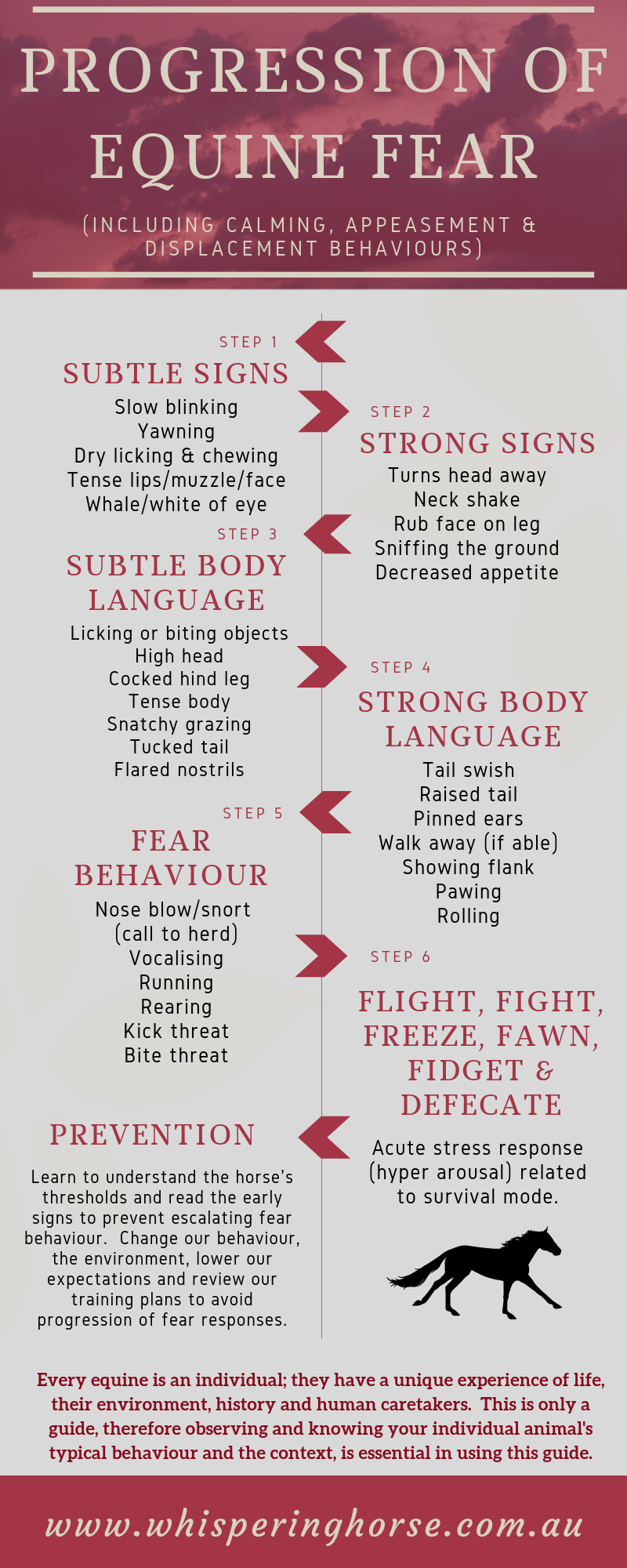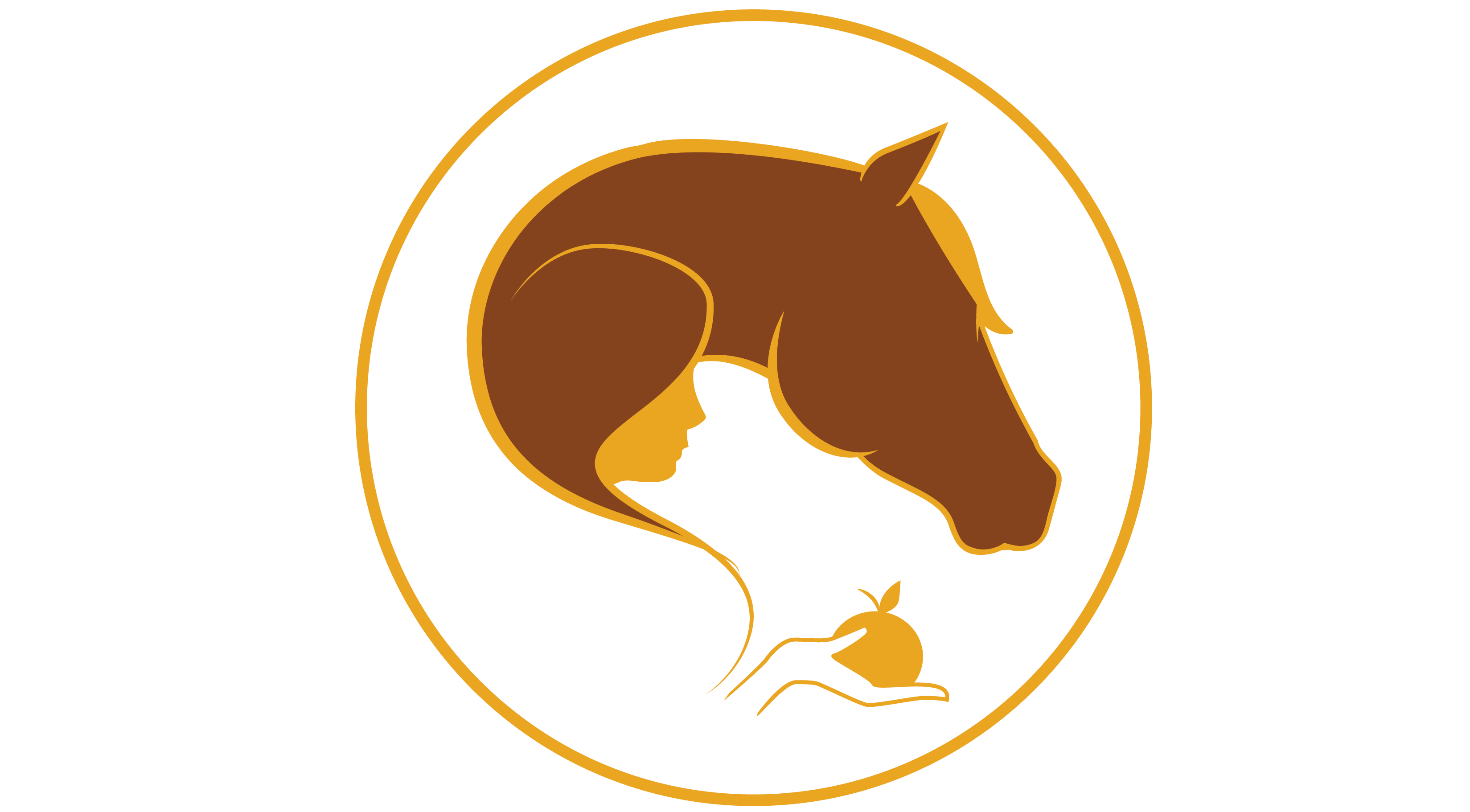Progression of Equine Fear

“The key themes that emerged throughout several of the questions were: that fear and/or anxiety is very poorly recognized by horse caregivers; that the more overt signs of more extreme fear are more likely to be recognised than the more subtle signs; and that fear and/or anxiety is often misinterpreted by horse caregivers.”
(Authors: Suzanne Rogers & Catherine Bell, Perceptions of Fear and Anxiety in Horses as Reported in Interviews with Equine Behaviourists, Animals 2022)
Please note that all behaviour needs to be taken in the context of the environment in which the horse finds themselves when you see these (and there are other) signs/behaviours. Note that we and our behaviour is also part of our horse’s environment. All behaviour needs to be considered in context ie. what happened prior, during and after and what is the horse’s history, etc.
If your horse is snoozing under a tree and yawns, dry licks and cocks a leg, clearly the horse is not experiencing fear. (Although they could be experiencing discomfort or pain.)
If you’ve just done or are doing some groundwork, round pen work, ridden work, gone for a hack, or dentistry, bodywork, worming or vaccinations, you may well see these signs and more.
Learn to understand the horse’s thresholds and read the early signs to prevent escalating fear behaviour. Change our behaviour, the environment, lower our expectations and review our training plans to avoid progression of fear responses.
Also consider that after fear as been ruled out that these behaviours may be caused by the horse’s internal environment, which means always rule out pain as a cause for behaviour.

